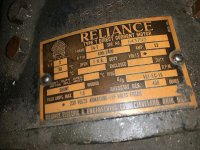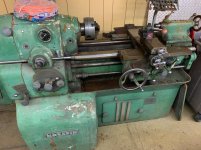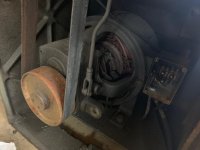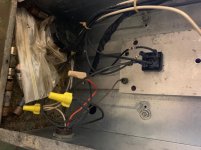Just bought a 1942 Round dial Monarch 10ee and I’m quite excited to get it powered up. I’m new to the lathe world so please forgive me if I sound stupid. Soo here it goes.
The motor is a 3hp reliance 230v armature 115v field. I however don’t know what that means. First question. Is it 3 phase?
After searching the internet and this forum I’m even more confused because in addition to the motor not specifying it’s phase I also have an extra box on mine. You’ll have to look at the photos for more info. Is it part of it a phase converter?
The power chord has 4 wires. Didn’t get a photo of that but nothing is marked on the chord or the box.
Any help is appreciated.
Thanks for letting me be a part of the forum. I look forward to making some new friends and learning a few tricks :-)





The motor is a 3hp reliance 230v armature 115v field. I however don’t know what that means. First question. Is it 3 phase?
After searching the internet and this forum I’m even more confused because in addition to the motor not specifying it’s phase I also have an extra box on mine. You’ll have to look at the photos for more info. Is it part of it a phase converter?
The power chord has 4 wires. Didn’t get a photo of that but nothing is marked on the chord or the box.
Any help is appreciated.
Thanks for letting me be a part of the forum. I look forward to making some new friends and learning a few tricks :-)





Last edited:








